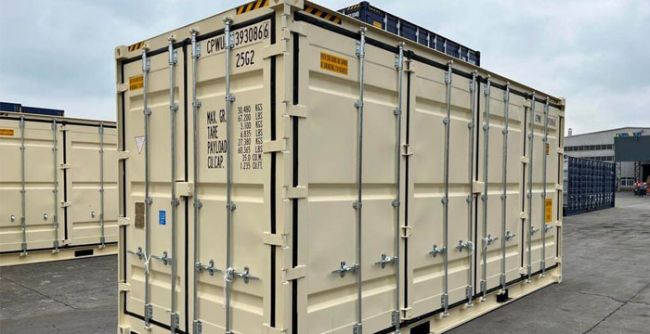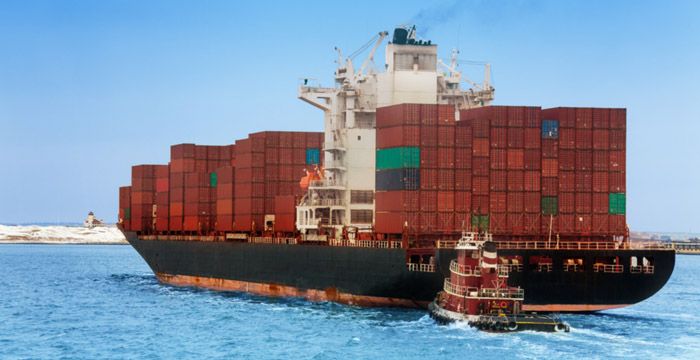Tips & Tricks
6 min read
How to Handle Dangerous Goods Containers


Accidents involving dangerous goods can happen fast, especially when containers aren’t handled properly. Whether it's chemicals, flammable materials, or toxic substances, even a small mistake in storage or transport can lead to serious harm or environmental damage.
That’s why understanding how to manage dangerous goods containers safely is so important. In this blog, you will break down the key steps to handling Dangerous Goods Containers. For those needing secure and compliant storage solutions, suppliers like SCF Containers offer a range of specialized units designed for hazardous materials.
Different countries and areas have laws on how to manage these items. These rules are made to protect people, the environment, and property.
Before handling any container, make sure you understand the local, national, or international regulations that apply. These can include safety rules, transport laws, and storage rules. The most common guidelines come from organizations like the United Nations (UN) and the International Maritime Organization (IMO).
Rules often say what type of container can be used, how to move it, and how long it can be stored. If you’re not sure what the law says, ask a supervisor or check with a government agency.
Every container must have the right label that clearly shows what is inside. Labels should include hazard symbols and warnings so people know how to stay safe. If a container holds something flammable, toxic, or corrosive, the label must say so.
Along with labels, documents must be filled out correctly. These papers include details like the type of substance, quantity, emergency contact numbers, and safety steps.

When dealing with dangerous goods, protective gear is a must. This gear is known as PPE (Personal Protective Equipment). It can include gloves, goggles, face shields, coveralls, and safety shoes.
The type of PPE you need depends on the goods being handled. For example, if the substance is toxic, you might need a mask or respirator. If it’s corrosive, chemical-resistant gloves are a must.
Before working with any container, always check the safety data sheet (SDS). It will tell you what protection is needed.
First, check the container for any damage. If there’s a leak, crack, or dent, report it right away. Use the right tools to lift or move the container, like forklifts or pallet jacks. Avoid dragging or dropping it.
Dangerous goods must be loaded in a way that keeps them steady during transport. If containers move around, they can spill or break. Use straps, padding, or barriers to keep them in place. During unloading, follow the same steps in reverse. Make sure the area is clear of people who are not involved in the work.
Emergency preparedness means having a plan and the tools to handle accidents, leaks, or fires. First, know where safety gear is kept—like fire extinguishers, spill kits, and first aid supplies.
Second, all workers should be trained in what to do if something goes wrong. There should be clear steps for calling help, shutting down the area, and keeping people safe. Make sure everyone knows the emergency exits and assembly points. Practice drills help people stay calm in real situations.
Technology can play a major role in improving how dangerous goods are monitored and managed. Many modern facilities use digital tools to increase safety, reduce human error, and maintain regulatory compliance.
By digitizing these systems, companies gain more control and can respond faster if issues arise.
For example, logistics operations often integrate AI tools into their workflows. You can see this kind of approach in articles like How to Integrate AI Tools into Your Business Workflow.
Handling procedures and container choices can vary depending on the industry. Here’s a quick breakdown of sector-specific safety needs:
Tailoring your approach by industry ensures better compliance and safer operations.
Container Selection: Choosing the Right Type for the Goods
Choosing the correct container is one of the most important safety decisions when dealing with dangerous goods. The wrong choice can lead to leaks, contamination, or legal violations.
Here are the commonly used container types:
Even with the best precautions, accidents can still occur. Here’s what to do if something goes wrong:
Quick thinking and proper action can prevent injuries and environmental damage during a crisis.
Make sure the container you use matches the hazard class and complies with UN, IMO, or local authority standards.
By understanding safety regulations, investing in proper training, and staying alert to potential risks, you create a safer and more reliable working environment. Don’t wait for problems to arise; have proactive measures to prevent incidents and protect your team, your business, and your reputation.
Be the first to post comment!